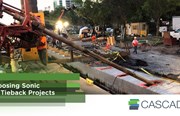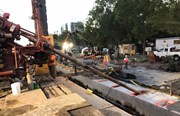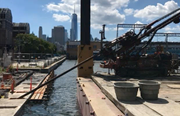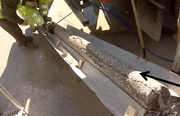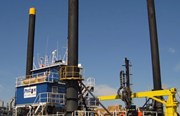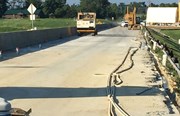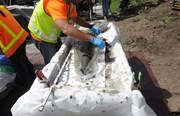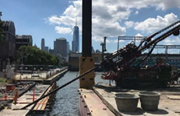How Sonic is Pushing the Envelope on Infrastructure Projects
By: Jim McCombsNo two infrastructure projects are ever alike and, while that’s the part I really enjoy, it can also create some real technical hurdles. We’ve worked with many engineers and contractors over the years who have brought us projects that are unusually challenging, requiring drilling solutions that have never before been attempted. In these cases, the sonic drilling platform can truly be a Swiss army knife.
In my upcoming webinar, Sonic Solutions for Infrastructure, I’ll talk more about how sonic can (and should) be used for infrastructure projects ranging from dam foundations and tunnels to landfill drains.
The versatility of sonic makes it an ideal choice for many infrastructure projects. My colleague Trent Castner covered some of the main reasons in a previous post, but there are a lot of benefits to this technology:
- The equipment imposes minimal site impact and, thanks to portable rig set-ups, sonic can be utilized even in very tight spaces.
- Sonic can drill both vertical and angled borings, with virtually no borehole deviation.
- It provides a continuous core sample in nearly all formations.
- Sonic technology allows you to drill completely dry (in soils) or with fluids.
- It acts as an insurance policy against depth refusal.
- Sonic is a fast drilling method.
These traits are often critical components for challenging infrastructure projects. Let’s walk through a few examples.
RIVER LOCK CHAMBER RELIEF WELL INSTALLATIONS
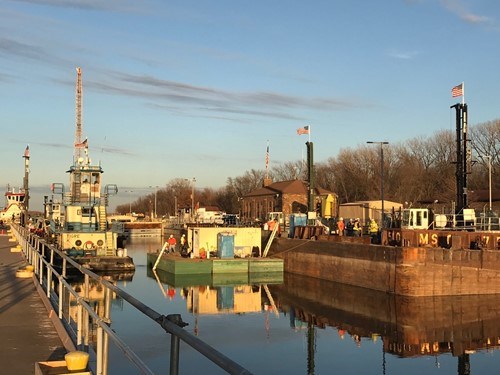
The purpose of projects like this one is to install a series of pressure relief wells below the lock chamber floor around the perimeter. The wells allow the lock chamber to be safely dewatered as hydraulic pressures below the floor are reduced via the wells.
Key Challenges:
- Drilling must conform to USACE 1110-1-1807 (fluid-free drilling, cased boring).
- Borehole diameter required in the project pictured was 16 inches (12” was the largest to this date, so we built what we needed).
- Also in this project, there was a compressed schedule to minimize lock closure time.
While sonic historically has not been used for this process, it has proven to be a very safe, effective, and efficient method for these type of installations.
TIEBACK INSTALLATION
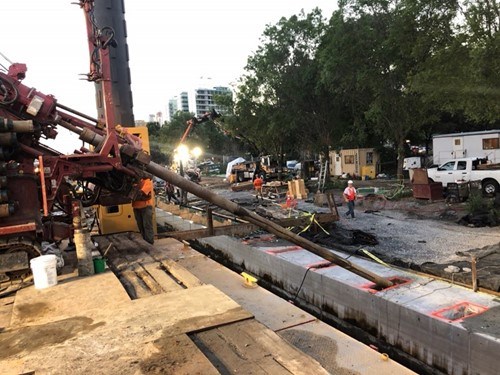
Tieback installations vary widely, but there are some common concerns.
Key Challenges:
- Based on the nature of a tieback project, there is likely limited space for the drill rig and any accompanying equipment.
- There may be obstructions or urban fill to contend with.
- Cuttings and/or fluids must be managed—and if a shoreline is involved, it is especially important to minimize any risk of them ending up in the water.
While sonic has not been the traditional technology for tieback projects, you can see why it would be a great option. Sonic is compact, rarely experiences refusal, and produces little investigation derived waste (IDW). We know it has no problem with angled drilling and is a fast drilling method. Sonic addresses many of the common challenges with tieback installation, saving time, space and potential material disposal issues.
READ MORE ABOUT USING SONIC FOR TIEBACK INSTALLATIONS >>
TUNNEL INVESTIGATION
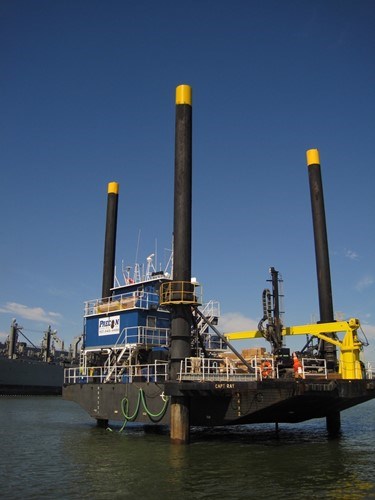
Tunneling is an expensive and potentially hazardous endeavor; however, these risks can be greatly mitigated through the collection of quality subsurface information. The subsurface information the sonic drill can provide is second to none, as you visually see a continuous core sample of both unconsolidated and consolidated formation materials. Having this information also mitigates against over design/over construct scenarios that impact project budget.
Key Challenges:
- Access can be limited when projects require over water work or drilling in tight metropolitan area.
- A variety of sample types may be needed beyond continuous core—for example, CPT or SPT.
As mentioned before, over water work and small footprints are not a problem for sonic. Additionally, a sonic rig can be set up to collect other types of samples—so the one rig can address several needs at once. Sonic’s ability to provide quality surface information from many different platform configurations makes it a preferred choice for this type of work.
READ MORE ABOUT USING SONIC FOR TUNNEL INVESTIGATION. >>
LANDFILL LEACHATE COLLECTION DRAIN INSTALLATION
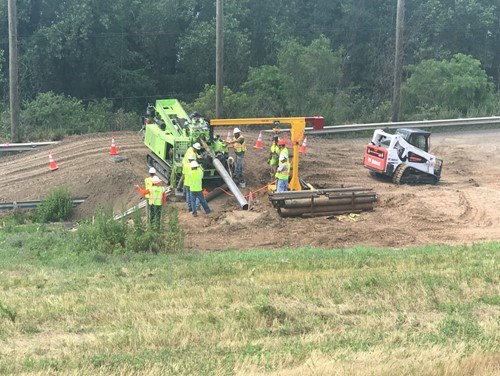
Day to day, most of us don’t have to consider the infrastructure needs of landfills, but installing a drain pipe in the base of a landfill can be a challenging project.
Key Challenges:
- Landfills by their very nature require drilling in soils, solid waste and mixed materials.
- A drain pipe installation involves drilling at a very low angle just above the basal liner.
Because sonic utilizes a smooth wall casing and core barrel advancement system, there is nothing for the waste to get hung-up on the tooling. Additionally, since the core barrel guides the casing, and the casing guides the core barrel during the drilling process, a very straight boring can be achieved. This allows for optimal placement of pipe that’s being installed.
As you can see, sonic drilling is an extremely versatile technology that is well suited for infrastructure projects and new approaches. Join me next week for my webinar, Sonic Solutions for Infrastructure, with any questions you might have about infrastructure project challenges. Can’t make it? Register anyway, and we’ll send you the recording to view at your convenience.




